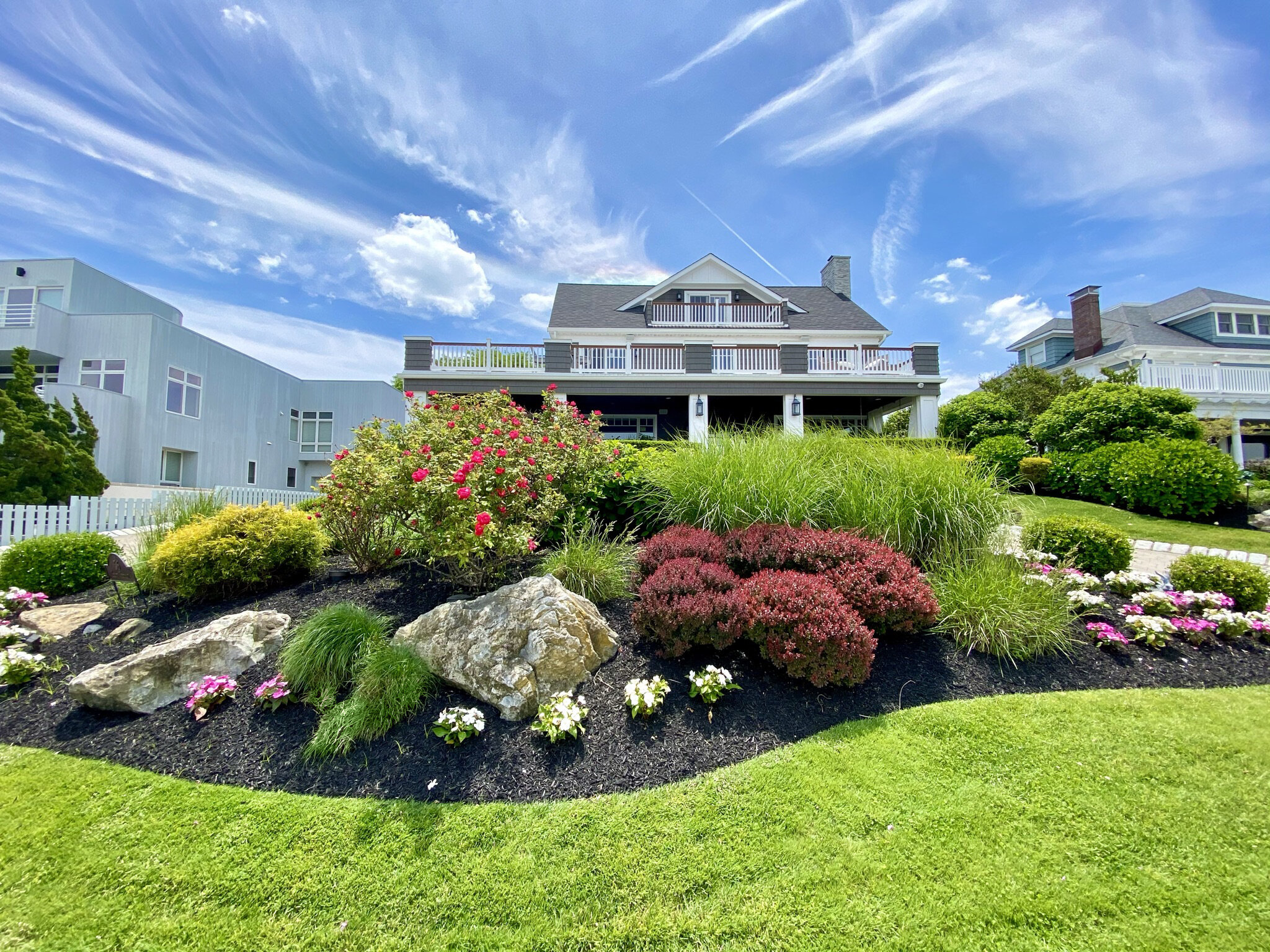A Comprehensive Overview to Designing and Implementing Effective Landscaping Solutions
The art and science of landscape design expand past simple looks; they involve a thoughtful integration of layout principles, environmental stewardship, and sensible implementation. What techniques can one use to ensure these landscapes not just grow yet also flourish in consistency with their surroundings?

Recognizing Landscape Layout Principles
One could wonder what fundamental components add to effective landscape design. At its core, effective landscape style depends upon a number of crucial principles that direct the plan and choice of elements within an area. These principles include unity, percentage, rhythm, and balance, each serving to produce a harmonious exterior atmosphere.
Unity describes the natural partnership among various elements, making sure that they interact cosmetically and functionally. Equilibrium can be attained through balanced or asymmetrical setups, permitting the landscape to really feel stable and inviting. Proportion entails understanding the range of aspects in regard to each various other and the surrounding atmosphere, advertising aesthetic harmony and comfort.

Examining Your Outdoor Space
Before applying the principles of landscape style, a detailed evaluation of your outdoor room is vital. This preliminary examination assists define the extent of your landscaping project and guarantees that your style straightens with the unique attributes of your residential or commercial property. Begin by examining the dimensions of your area, taking precise measurements to understand the readily available location for various aspects such as gardens, patios, and pathways.
Following, observe the existing attributes of your landscape, consisting of topography, soil high quality, and drainage patterns. These variables considerably influence plant selection and placement. In addition, analyze the sunshine direct exposure throughout different areas throughout the day, as this will certainly impact the kinds of plants that flourish in your yard.
Consider the microclimates developed by structures, trees, and various other challenges, as they can impact temperature level and moisture degrees. Last but not least, remember of any existing plants or hardscape components that you desire to maintain or get rid of. This comprehensive examination lays the foundation for a well-informed and effective landscape design service, making sure that your design is not only cosmetically pleasing however also useful and sustainable for several years to find.
Lasting Landscape Design Strategies
These techniques not only advertise ecological equilibrium but additionally improve the useful and visual value of a landscape. Carrying out reliable watering systems, such as drip watering, decreases water waste and makes certain that plants obtain adequate moisture (Palm Desert Landscaping).

An additional reliable method is the calculated positioning of hedges and trees to provide natural windbreaks and color, hence reducing energy expenses (Palm Desert Landscaping). Rainfall gardens can be incorporated right into the landscape design to take care of stormwater drainage effectively, filtering contaminants before they go into rivers
Picking the Right Plant Kingdoms
Selecting the right plants for your landscape is important to attaining both visual charm and eco-friendly harmony. The procedure begins with an understanding of your local climate, dirt conditions, and the details microenvironments within your landscape. Assessing aspects such as sunshine exposure, wetness degrees, and existing plants will certainly help you choose plants that thrive in your unique setup.
Take into consideration integrating indigenous plants, as they are well-adapted to local problems, need much less maintenance, and support regional wildlife. Furthermore, picking a diverse range of varieties can boost biodiversity while reducing the threat of disease and parasite outbreaks. Discover More Here It is necessary to examine the growth routines, flowering durations, and seasonal colors of possible plants to create a natural and vibrant landscape.
Moreover, think regarding the planned use the space; as an example, if the area will certainly experience high foot website traffic, select durable ground covers. By attentively selecting plants that align with both your environmental requirements and visual objectives, you can produce a sustainable landscape that not only enhances your property yet likewise adds favorably to the bordering environment.

Execution and Maintenance Techniques
When the best plants have been selected for your landscape, the focus moves to effective implementation and ongoing upkeep approaches. Successful installment starts with correct site prep work, that includes dirt screening to identify nutrient levels and pH, followed by changing the dirt as required. Carefully prepare plants according to their development habits and light requirements, guaranteeing adequate spacing to promote healthy and balanced growth.
Irrigation is a vital component of implementation. Establish a watering schedule that considers the particular demands of each plant types, adjusting for seasonal adjustments. Using drip irrigation systems can boost water effectiveness and lower drainage.
Maintenance strategies have to be carried out to make certain the long life and vigor of your landscape. Regular tasks consist of weeding, mulching, and pruning to manage growth and stop illness. Fertilizing must be conducted based upon dirt examinations, giving the essential nutrients without over-fertilizing.
Checking for site link pests and illness is crucial; early discovery can prevent considerable damage. Lastly, seasonal adjustments to maintenance regimens, such as winterizing perennials and preparing for springtime development, will ensure that your landscape remains visually appealing and healthy year-round.
Conclusion
Effective implementation and recurring maintenance better make sure the durability and vigor of landscapes. By integrating these aspects, landscapes can be changed right into beautiful, functional environments that promote biodiversity and add positively to community health.
One might question what foundational elements contribute to efficient landscape layout. At its core, effective landscape layout pivots on several essential principles that lead the setup and choice of elements within an area.Picking the right plants for your landscape is important to attaining both aesthetic charm and eco-friendly consistency. It is vital to review the growth practices, blooming periods, and seasonal shades of prospective plants to create a vibrant and natural landscape.
When the right you can check here plants have actually been chosen for your landscape, the focus changes to efficient application and ongoing maintenance approaches.